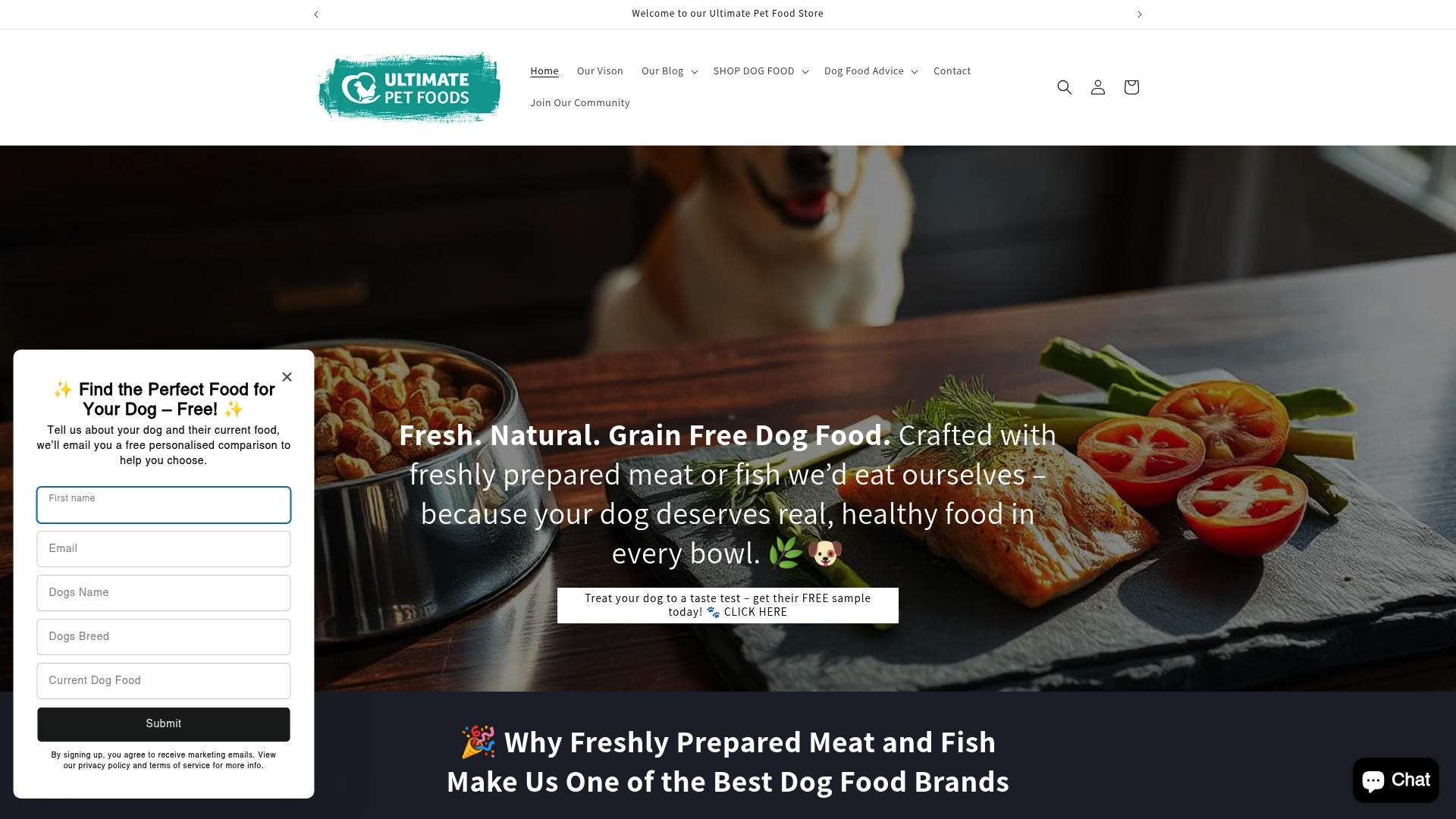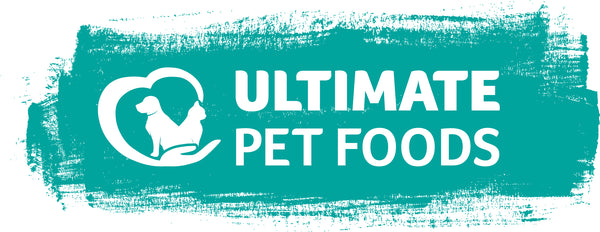
Understanding Can Dogs Eat Grains: Nutrition Explained
Share
Grains like wheat, rice, and oats show up in nearly every dog food bag on the shelf. Some dogs seem to thrive on these ingredients and gobble up every meal with wagging tails. Yet, research shows that grain sensitivities can cause chronic skin irritations or digestive issues in up to 24% of dogs. That means what’s considered a staple ingredient could be the reason behind your pet’s persistent itching or tummy trouble.
Table of Contents
- What Are Grains And Their Role In Dog Diets?
- Why Some Owners Choose Grain-Free Diets For Dogs
- How Grains Can Affect Dog Health And Nutrition
- Key Considerations For Feeding Grains To Dogs
- Understanding Sensitivities And Allergies Related To Grains
Quick Summary
| Takeaway | Explanation |
|---|---|
| Not all dogs digest grains equally | A dog’s ability to process grains depends on individual factors such as breed, age, and health. |
| Monitor for grain sensitivities | Symptoms like skin irritations or gastrointestinal issues may indicate grain allergies or sensitivities in dogs. |
| Consider grain-free diets cautiously | Grain-free alternatives can be beneficial but must offer a balanced nutritional profile tailored to your dog’s needs. |
| Consult a veterinarian for dietary choices | Engaging a veterinary nutritionist helps identify the best diet—grain-inclusive or grain-free—based on your dog’s unique profile. |
| Quality matters when choosing grains | Select high-quality, minimally processed grains to ensure optimal nutrition for your dog. |
What Are Grains and Their Role in Dog Diets?
Grains represent a fundamental category of carbohydrate-rich foods that include wheat, rice, corn, barley, and oats. In the context of dog nutrition, understanding their role and potential impact is crucial for making informed dietary choices. Understanding the Benefits of Grain Free Diet for Dogs can provide additional insights into this complex nutritional landscape.
Defining Grains in Canine Nutrition
Grains are seeds of grass-like plants that contain three primary components: the bran (outer layer), endosperm (middle layer), and germ (inner core). Each component contributes different nutritional elements to a dog’s diet. While grains can provide carbohydrates, proteins, and essential minerals, not all dogs process them equally well.
Research from Cornell University College of Veterinary Medicine indicates that a dog’s ability to digest grains varies based on several factors:
- Individual digestive system efficiency
- Breed-specific genetic variations
- Age and overall health status
- Potential existing food sensitivities
Nutritional Considerations and Potential Challenges
While grains can be a source of energy and nutrients, some dogs might experience digestive challenges or allergic reactions. Grain sensitivities can manifest through symptoms like skin irritations, gastrointestinal upset, or chronic inflammation. This doesn’t mean grains are inherently bad, but rather that individual dogs have unique nutritional requirements.
Our premium kibble is carefully formulated with gentle cooking at 82°C to preserve nutrients and includes prebiotic MOS and FOS, ensuring optimal digestion and nutrient absorption. This approach addresses potential grain-related concerns while providing a balanced, nutritionally complete meal for dogs with varying dietary needs.
Understanding your dog’s specific nutritional requirements is key to selecting the most appropriate diet. Consultation with a veterinary nutritionist can help determine whether grain-inclusive or grain-free options are best suited for your pet’s individual health profile.
Why Some Owners Choose Grain-Free Diets for Dogs
The trend towards grain-free dog diets has gained significant momentum in recent years, driven by a combination of health concerns, perceived nutritional benefits, and individual dog requirements. What Ingredients to Avoid in Dog Food for Healthier Pups provides additional context for pet owners exploring dietary options.
Health and Digestive Considerations
Many dog owners opt for grain-free diets based on observations of potential digestive sensitivities and allergic reactions. Research from American Kennel Club suggests that some dogs experience inflammatory responses or gastrointestinal discomfort when consuming certain grains.
Key motivations for choosing grain-free diets include:

- Potential reduction of food-related allergic reactions
- Managing specific health conditions like skin irritations
- Mimicking more ancestral canine dietary patterns
- Supporting dogs with documented grain sensitivities
Nutritional Alternatives and Considerations
Grain-free diets typically replace traditional grains with alternative carbohydrate sources such as sweet potatoes, legumes, and vegetables. These alternatives can provide essential nutrients while potentially reducing inflammatory responses. However, pet owners must carefully evaluate the overall nutritional profile of grain-free options.
Our premium kibble addresses these concerns by incorporating freshly prepared meat or fish, gently cooked at 82°C to preserve nutrients. By including prebiotics MOS and FOS, we ensure optimal digestion and nutrient absorption, creating a balanced nutritional approach that supports dogs with diverse dietary needs.
While grain-free diets can be beneficial for some dogs, they are not universally ideal. Professional veterinary consultation remains crucial in determining the most appropriate nutritional strategy for individual pets, taking into account breed, age, health status, and specific metabolic requirements.
Below is a comparison table outlining the key differences between grain-inclusive and grain-free diets for dogs, as discussed in the article.
| Aspect | Grain-Inclusive Diet | Grain-Free Diet |
|---|---|---|
| Main Carbohydrate Source | Wheat, rice, oats, corn, barley | Sweet potatoes, legumes, vegetables |
| Potential Benefits | Provides energy, fibre, B vitamins, minerals | May reduce allergy or sensitivity reactions, alternative carbohydrates |
| Main Risks | Skin irritations, digestive issues in sensitive dogs | Imbalanced nutrition if not properly formulated |
| Suitability | Most dogs without grain sensitivities | Dogs with documented grain sensitivities or allergies |
| Considerations | Monitor for symptoms, choose high quality minimally processed grains | Ensure nutritional completeness, seek veterinary advice |
How Grains Can Affect Dog Health and Nutrition
Understanding the intricate relationship between grains and canine health requires a nuanced approach that considers individual nutritional needs and potential physiological responses. Understanding Dog Foods to Avoid for Optimal Health offers additional insights into comprehensive nutritional strategies.
Nutritional Impact of Grains
Grains can provide significant nutritional benefits when integrated appropriately into a dog’s diet. Research from the National Institutes of Health suggests that whole grains contribute essential nutrients that support overall canine wellness.
Key nutritional contributions of grains include:
- Complex carbohydrates for sustained energy
- Dietary fibre supporting digestive health
- B vitamins essential for metabolic functions
- Minerals like selenium and magnesium
- Antioxidants that combat cellular stress
Potential Digestive and Allergic Responses
Grain sensitivity varies significantly among individual dogs, with some experiencing inflammatory responses or digestive challenges. Symptoms might manifest as:
- Skin irritations and persistent itching
- Gastrointestinal discomfort
- Chronic ear infections
- Inconsistent stool quality
- Reduced energy levels
Our premium kibble addresses these concerns through carefully selected ingredients. We use gentle cooking methods at 82°C to preserve nutrients and include prebiotics MOS and FOS, ensuring optimal nutrient absorption and supporting dogs with potentially sensitive digestive systems.
Individual breed characteristics, age, and overall health status play crucial roles in determining how effectively a dog processes grains. Professional veterinary consultation remains the most reliable method for developing a personalised nutritional strategy tailored to your dog’s specific requirements.
Key Considerations for Feeding Grains to Dogs
Navigating the complex landscape of canine nutrition requires thoughtful evaluation of dietary components, particularly when it comes to grains. How Much to Feed Dog: A Complete Guide to Nutrition provides comprehensive insights into balanced feeding strategies.
Quality and Sourcing of Grains
Not all grains are created equal, and the source and processing method significantly impact their nutritional value. Veterinary Nutrition Research emphasises the importance of selecting high-quality, minimally processed whole grains for optimal canine nutrition.
Key factors in grain quality include:
- Organic and non-GMO sourcing
- Minimal processing to retain nutritional integrity
- Absence of artificial preservatives
- Sourced from reputable agricultural regions
- Balanced with other nutritional components
Individual Dog Dietary Assessments
Grain tolerance is highly individualised, with factors like breed, age, and health status playing crucial roles in dietary compatibility. Monitoring your dog’s response to grains is essential for maintaining optimal health.
Consider these critical assessment parameters:
- Observe digestive responses after grain consumption
- Track energy levels and overall vitality
- Monitor skin and coat health
- Note any allergic reactions or sensitivities
- Consult veterinary professionals for personalised guidance
Our premium kibble addresses these nuanced nutritional needs by incorporating freshly prepared meat or fish, gently cooked at 82°C to preserve nutrients. We include prebiotics MOS and FOS to support digestive health, ensuring a balanced approach that accommodates diverse canine dietary requirements.
Ultimately, successful grain integration demands a personalised, observant approach that prioritises your dog’s unique physiological needs and overall well-being.
Understanding Sensitivities and Allergies Related to Grains
Dog owners navigating nutritional challenges must understand the nuanced landscape of grain sensitivities. Understanding the Best Dog Food for Sensitive Dogs offers additional context for managing complex dietary requirements.
Identifying Grain-Related Allergic Responses
Grain allergies differ from general food sensitivities, representing specific immunological reactions triggered by protein components within grains. Veterinary Dermatology Research indicates that some dogs develop hypersensitive immune responses to specific grain proteins.
Typical allergic manifestations include:
This table highlights the typical symptoms associated with grain sensitivities or allergies in dogs, aiding dog owners in identification and monitoring.
| Symptom | Description |
|---|---|
| Skin irritations | Persistent itching, redness, or inflammation of the skin |
| Gastrointestinal upset | Vomiting, diarrhoea, or inconsistent stool quality |
| Chronic ear infections | Recurring infections of the ear, often with itching and discharge |
| Excessive scratching or licking | Frequent scratching, biting, or licking of paws and body |
| Recurrent hot spots | Localised areas of inflamed or infected skin |
| Reduced energy levels | Noticeable decrease in playfulness or activity |
- Persistent skin inflammation
- Chronic ear infections
- Excessive scratching or licking
- Gastrointestinal disturbances
- Recurrent hot spots
Diagnostic and Management Strategies
Determining grain sensitivities requires systematic assessment and professional veterinary guidance. Elimination diets represent the gold standard for identifying specific allergenic triggers, allowing pet owners to methodically isolate and understand their dog’s unique nutritional profile.
Critical diagnostic considerations involve:
- Comprehensive veterinary consultation
- Detailed food and symptom tracking
- Gradual dietary modification
- Blood testing for specific allergen markers
- Potential referral to veterinary nutrition specialists
Our premium kibble addresses these complex nutritional needs by incorporating freshly prepared meat or fish, gently cooked at 82°C to preserve nutrients. We include prebiotics MOS and FOS to support digestive health, ensuring a balanced approach that accommodates dogs with potential grain sensitivities.
Successful management of grain-related allergies demands patience, professional guidance, and a personalised approach that prioritises individual canine physiological responses.

Support Your Dog’s Unique Nutritional Needs With Premium Grain-Free Choices
If you have ever worried about whether grains are right for your dog due to allergies, digestion troubles, or recurring skin issues, you are not alone. As explored in this article, understanding which foods support your dog’s energy, coat, and health is crucial. Many pet owners want a solution that avoids common grain-related sensitivities while nourishing their dogs with the best nature can offer. Explore a variety of expertly crafted recipes in our grain-free dog food collection to discover gentle nutrition made specifically for sensitive and health-focused pets.

Give your dog the gift of high-quality, fresh ingredients designed for optimal digestion and wellbeing. Visit Ultimate Pet Foods and see how our salmon dog food options and other premium blends can help reduce wheat and grain worries while supporting everything from skin to energy levels. Choose a science-backed diet today and notice the difference in your dog’s happiness and health.
Frequently Asked Questions
Can dogs eat grains?
Yes, dogs can eat grains, as they provide carbohydrates, proteins, and essential minerals. However, individual dogs may process grains differently, so it’s essential to monitor their response to grain inclusion in their diet.
What are the symptoms of grain sensitivities in dogs?
Symptoms of grain sensitivities in dogs may include skin irritations, gastrointestinal upset, chronic inflammation, excessive scratching, and inconsistent stool quality.
What are common grains included in dog food?
Common grains in dog food include wheat, rice, corn, barley, and oats. Each provides different nutritional benefits, but quality and sourcing are crucial for health.
Should I consider a grain-free diet for my dog?
A grain-free diet may be beneficial for dogs with specific grain sensitivities or allergies. However, it’s important to consult with a veterinary professional to determine the best dietary approach for your dog’s unique health needs.
Recommended
- Understanding the Benefits of Grain Free Diet for Dogs – Ultimate Pet Foods
- What Ingredients to Avoid in Dog Food for Healthier Pups – Ultimate Pet Foods
- Understanding Common Dog Food Ingredients for Healthier Pups – Ultimate Pet Foods
- How Much to Feed Dog: A Complete Guide to Nutrition – Ultimate Pet Foods
